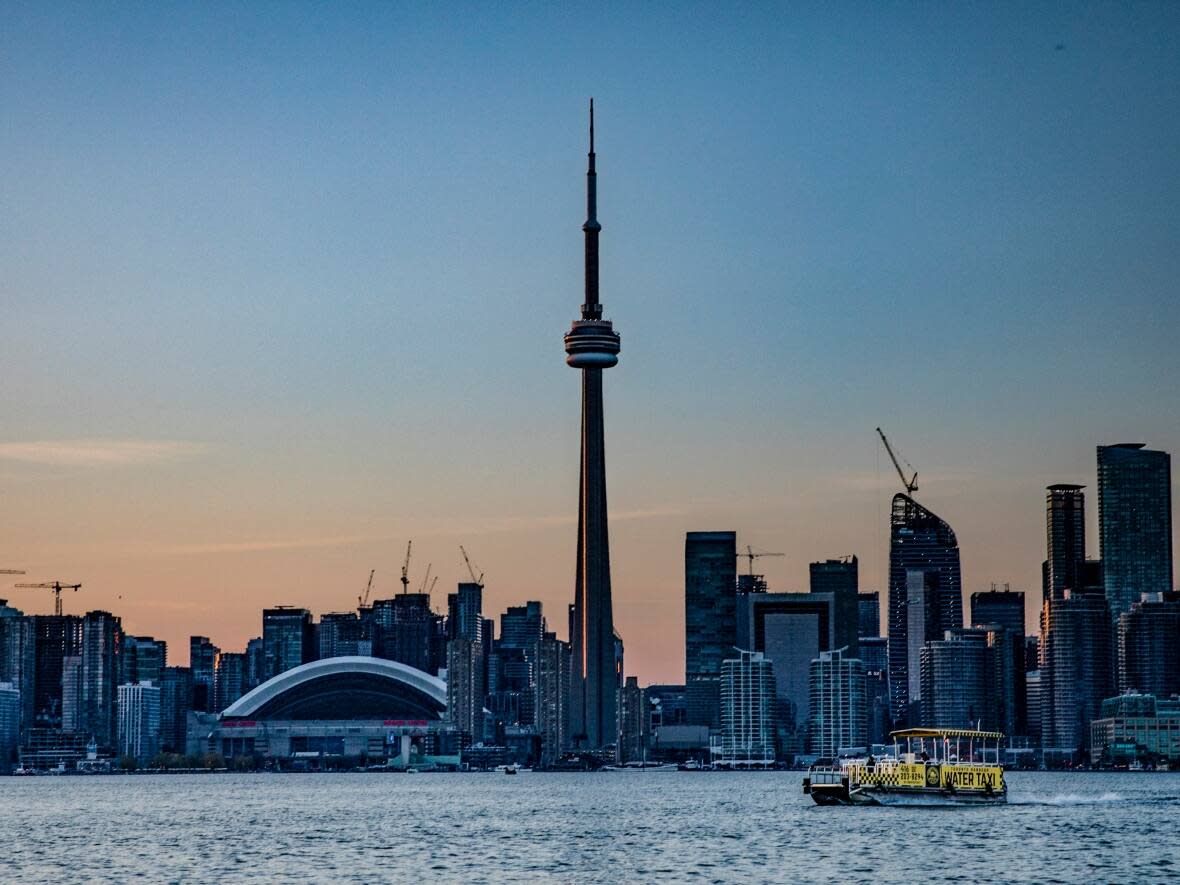Could Lake Ontario be the answer for commuters heading downtown? Waterfront Toronto wants to know

The government agency that oversees Toronto's waterfront is mulling the idea of an expanded water shuttle network that could serve the city's waterfront communities from Etobicoke to Scarborough.
Waterfront Toronto's request for proposals, issued April 4, gives companies until April 27 to submit their ideas about the feasibility of the project.
Waterfront Toronto's guidelines envision a three-tier expansion:
Enhancing the current ferry service with trips to more and further destinations.
Building on the existing number of water taxis.
Introducing a new "sea bus" system that would see new water taxi routes and nodes set up along the lines of a commuter bus service for regular travellers.
Chris Glasiek, chief planning and design officer with Waterfront Toronto, says changes are needed to accommodate the development and popularity of the waterfront.
"As the residential population grows on the waterfront, could there be demand for a sea bus system? If so, what might need to be put in place to make that happen?" asked Glaisek. "Is that something the city would want to do? Does it need to be regulated? So all of those are things we'll be looking at."
Not first attempt at enhanced ferry service
Enhanced ferry service has been attempted in the city before. Most recently, Hoverlink Ontario Inc. announced it will begin hovercraft service between Toronto and Niagara Region this summer. A Toronto-Rochester ferry link in 2004 only lasted a couple of seasons.
Athough the request for proposals is only a couple of weeks old, it's already drawing sharp reaction from waterfront users, like Paul Howard, commodore of the Outer Harbour Sailing Federation and member of the group Friends of Cherry Beach.
He says an enhanced water taxi service is probably not feasible.
"A lot of taxis are slow, they require a lot of intensive infrastructure, they're seasonal," he said."They'd be very unreliable because of ... wind and waves, and also it's much shorter by road."
As well, he said, commuters depending on a water taxi, or sea bus to get to and from downtown could be in for a rough ride.
"It might not be very pleasant if it was blowing 20 knots of wind coming out of the Eastern Gap. There'd be six-foot waves."
Howard and his federation have been meeting with Waterfront Toronto about the idea since 2020, and he says he's made it clear to the agency that he wants no motorized watercraft within the Outer Harbour, where, he says, thousands of people currently gather for long-distance swims, kite-boarding, wind-surfing, sailing and other activities that could be disrupted by new water taxis or sea buses.
And with the development of the Port Lands just to the north, many more thousands will be drawn to the Cherry Beach-Outer Harbour waterfront, he says.
But further west, Tony Farebrother, chair of the Toronto Island Community Association, welcomes the idea.
'A lot more human traffic down here'
He sees the burgeoning waterfront communities and growing interest in accessing the waterfront amenities like the Toronto Islands as assets that will need services.
"There's a lot more human traffic down here," he said. "The demand for the Island park is much higher, so the ferry doesn't have the capacity to manage it."
He said enhanced ferry and water taxi service will improve the waterfront experience for residents and visitors alike. But he has one reservation:
"There is demand, and there is a need," he said. "Decisions are always being made on what's the most profitable way of doing things, [rather than] being driven by what people need and the community needs."
Although there could be ferry nodes in Niagara Region, Etobicoke and Scarborough, the locations of other new stops, what routes the new services would operate on and exactly what sort of watercraft would be used are all matters that haven't yet been settled, Glaisek said.
The Port Lands projects, which will see new residential communities established on former industrial lands in the eastern downtown waterfront areas, are a major driver of the idea to build on existing water routes, Glaisek said.
"We're creating a new island called Villiers Island that will be redeveloped once flood protection is in place, that will probably have around 10,000 people living on it," he said. "How are they going to get from Villiers Island to the downtown, to the Ontario Place and exhibition grounds or even to the airport?
"Water is an obvious possibility for those populations," he said.
It's not yet clear whether the enhanced service would be publicly or privately funded and operated.
Waterfront Toronto plans to have final recommendations on the idea this fall.


